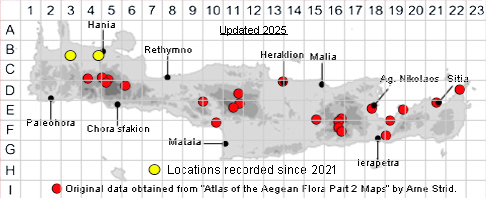
SPECIES DESCRIPTION
ATRIPLEX PATULA
Family and Genus:- See- AMARANTHACEAE
Common Name:- Common orache
Homotypic Synonyms:- Atriplex hastata var. patula, Atriplex hastata subsp.
patula, Atriplex oblongifolia var. patula, Atriplex patula subsp. typica,
Schizotheca patula, Teutliopsis patula.
Meaning:- Atriplex (L) A name used by the Roman naturalist and philosopher
Pliny, from the ancient Greek meaning black and intertwined.
Patula (L) Spreading, opened up, broad.
General description:- Erect or prostrate-spreading, much-branched annual.
Stems:-
1) 15-80 cm, angular or ridged, with long internodes, green with stramineous
stripes.
Leaves:-
1) Alternate or opposite.
a) lower, 2-10 x 1.5-3 cm, oblong- to rhombic-hastate or obovate-oblong without
lateral lobes, entire or irregularly toothed, cuneate to attenuate at the base,
obtuse or subacute, green or greyish-green to subglaucous ± glabrous or
farinose.
b) Upper, 2-5 x 0.3-1.5 cm, oblong- to linear-lanceolate ± entire, (without basal
lobes), cuneate-tapering at the base, acute at the apex, petioles distinct, 1-3
cm.
Flowers:-
1) Inflorescence, to 50 cm, lax, paniculate, ebracteate above, with small leaf-like
bracts in the lower part.
2) Flowers, solitary or clustered, axillary or on elongate spike-like branches.
3) Perianth segments, in the male flowers 3-5, connate to the middle, c. 0.8 x 0.4
mm, oblong, cucullate, farinose.
4) Stamens, 3-5.
a) filaments, glabrous, c. 0.8 mm
b) anthers yellow.
5) Bracteoles, connate at the base or almost to the middle, sessile or shortly
petiolate, c. 1.5-5(-7) mm, broadly rhombic-deltoid to almost orbicular, acute to
subacute, never reflexed, at maturity, dentate or entire, dorsally tuberculate or
smooth, herbaceous or very thick and fleshy, not hardened (indurated) in fruit.
Fruit:-
1) Seed vertical, ± uniform, lenticular, c. 2 mm diam.
a) testa, shiny dark brown or black, almost smooth or very minutely punctate
Key features:-
1) Lower leaves cuneate or attenuate at the base.
2) Fruiting bracteoles triangular- to rhombic-ovate.
Habitat:- In a variety of open, disturbed, nutrient rich habitats, offen an early
coloniser. Salt tolerant, but not halophytic, 0-800 m. (2200m. in dolines).
Distribution:- Throughout Greece , much of Europe and temperate Asia, introduced
elsewhere.Native to C Asia, cultivated and naturalised in C & S Europe. Limited
distribution on Crete.
Flowering time:- June-Oct
Photos by:- An Other
